Many questions, little rain
I'm giving a lot of answers on social media, and share some of them here. They relate to no dig, mulching, and seasonal vegetables.
For me, the biggest question is when will it rain? I can't believe how much the soil has dried out, even in the last five days with such a steady wind. Now we are forecast ten days of 27 to 30°C/mid 80s F, and we shall be watering a lot, by hand. It's very unusual here where the climate is normally damp.
Nonetheless, I keep faith and continue to sow seeds in the greenhouse. Now is a top time by season and moon to sow radicchio chicories, endive, chard, lettuce, and kale. From a sowing of 18 days ago, we have 450 plants to put in this week.
Greenhouse 7th July with endive, chicory / radicchio, broccoli and cauliflower ready to plant
Tomato ripening, how to speed it up?
Beef tomato plants can seem particularly slow to ripen, especially the first truss, closest to ground level. At this stage of their growth, they are performing a lot of tasks. The plant itself is still in full growth, while somehow finding resources to grow more leaf, stem and fruit, as well as to ripen the lowest fruits.
I'm speeding the ripen process by picking fruits at breaking stage, see the thumbnail photo and my video. That's a term for the first sight or blush of colour. The flavour is still good, because tomatoes ripen very well off the plant, surrounded by the ethylene gas they emit. Keep them in your house, but not in sunshine.
This is mostly for beef tomatoes, because cherry tomatoes ripen easily on the plant.
Tomatoes ripen better at temperatures below about 30°C/86°F. My greenhouse is often hotter than this, and will be this week. In addition the bright sunlight can scald fruits, as it does to peppers.
Polytunnel Sakura on left are ripening nicely and the mulch is compost, see below. I have deleafed at the bottom, while the canopy above is strong, see below.
Polytunnel mulch
Q ‘Everything in my polytunnel is small this year. It’s too dry and I couldn't afford much compost as I was expanding outside the polytunnel’.
A A polytunnel is the highest value part of a garden or holding, and you need to find sufficient compost for it. That justifies and makes more value from all the extra work of watering and looking after the plants in there. It can then be a haven of abundance, in the winter as well.
Melons in the polytunnel 7th July, Malaga sown 28th March, planted early May
Watering
Q ‘Have you ever used an ollas pot for watering? I’ve just acquired one and only put it in yesterday, I shall be monitoring it closely. I have some raw sheep’s fleece and put some courgette plants after watering three days ago since when the temperature here has been high 20sC. This morning I put my hand under the fleece and the soil was still damp so have popped round to my local sheep farmer and bought three more fleeces this morning’.
A Ollas pots did not work for me. Firstly, it was a lot of work and digging to get them in the ground. Secondly, by the time I had filled them, I may as well have watered the ground nearby. When you water thoroughly so that the water soaks in, the effect is pretty much the same. Especially because, with no dig, the soil holds moisture well, and is protected by the compost mulch.
A mulch like the sheep wool is good for maintaining moisture close to the surface. But remember that rain cannot fall through it, and plant roots continue to suck moisture from the soil, so it becomes dry underneath in time..
Big job of digging to insert an ollas clay pot. I used it for a whole year.
Mulching materials
Q ‘You inspired me to mulch with compost this year (vs straw or leaves which I have typically used in the past) but I'm finding that the top inch or so is always bone dry but with good moisture past that point. There can't be any way the microorganisms are alive in that dried out layer. We put down about 2-3 inches of compost. I live in Boston, MA and our summers are becoming hotter and hotter - high 80s-90s most recently’.
A Microbes can go dormant, and then as soon as it rains again, they kind of reignite. If there is a mulch of say hay or straw on top, light rain cannot pass through that and it's lost before it reaches soil. Currently I'm watering lettuce here every 3 days or so. As you can see, growth is exceptionally healthy. And if the mulch had been straw, I could not have intersown carrots, and the lettuce leaves we pick regularly would be full of straw. Compared to other mulches, I find compost has the most answers and often results in a thin mulch of small woody pieces which were in the compost.
Lettuce Saragossa 7th July, was transplanted 24th May and has given two months of harvests. In late May I intersowed carrots between. The lettuce need picking again of outer leaves.
My ‘small garden’ of 25 m²/270 ft.² has compost mulch on beds and thin wood on paths, photo 7th July. Cucumbers and courgettes are cropping, and just a few tomatoes are ripening
No dig soil pests
Q Hello, from Canada. I am on my second year of trying no-dig gardening, and love that there are fewer weeds. I mulch with clean straw. I have not been following all the posts, but am wondering if there is a difference in pest population since many pests overwinter in soil, and the soil is only minimally disturbed.
A You are looking at only one side of the issue, which is pests. What about predators? Insects like ground beetles, which eat slug eggs, are left undisturbed thanks to no dig, and can proliferate and do their eating and breeding.
I do not advocate mulching with straw, because that can harbour more pests underneath it, such as slugs. It's suitable in my experience for warm and dry climates. In the spring, it keeps soil cool, which, for many of us is not a good thing, and the continual moisture in spring before plants start pulling it out, means a high population of slugs. Then, in summer, the straw can actually keep rain out because it needs a heavy shower to pass through it.
Trip to Ireland
July 19th and 20th, I'm giving take horses at Woodlands Hotel in Adair, County Limerick. Lots of information and a slideshow in the morning, then a practical in this garden through the afternoon. See the events page of my website.
Weeds invading
Q ‘Any hints on ways to eradicate Bermuda grass from bed areas where it keeps creeping in’?
A That’s the hardest bit, whether you’re digging or no dig, how to stop invasion of perennial weeds. You need to keep them cut short regularly, to reduce their vigour. And to have a border area around any bed of say 2 feet / 60 cm, which is mulched with cardboard initially and a little compost. Then you need to keep cutting the edge as in the photo, and remove new shoots with a trowel, as soon as seen. The weed growth lessens in time.
Around a new bed, establishing a clean edge using cardboard, only in the first year
Using a half moon edger, made of bronze. This photo dates to 2011, and I still use the same edger, thanks to the metal not rusting and it’s excellent construction.
Check out bronze tools, 95% copper, at Implementations in the UK. And PKS Bronze in the EU.
Compost diseased wastes
Q ‘I'm struggling whether to compost spent tomato leaves that may have fungal diseases or bury them in a hugelculure mound and let nature take its course . What are your suggestions?’
A No digging needed because you can compost everything. There is much false information that tells you this is risky. It’s not! Fungal spores degrade when their host organism has decomposed. Spores of late blight cannot therefore survive in a compost heap. And it’s the same for powdery mildew on courgette and cucumber leaves, downy mildew on lettuce, and more.
Potato wastes also are good to compost, see this new video. And this works in a cold heat, it does not have to be hot for decomposition to happen.
Nine months ago after a wet summer, this is late blight’s brown patches on tomato leaves. i composted all of it.
When adding a lot of green material to compost heaps, it's good to add brown wastes as well. Woody pieces need to be in small lengths and a friend is crowdfunding for a pedal powered wood chipper. I'm intrigued how it can work, see the link.
Jazzy potato harvest 4th July, see video. All potato leaves and tiny potatoes are now in the compost heap.
No Dig Success, and how to…
This is not a question, but I'm slipping it in here as it's such a nice testimonial, and offer.
“I have just finished harvesting the last of my Charlotte potatoes. They do not have a blemish on them, despite being grown in the same small patch of ground that I have used for them for at least 4 years.
That is roughly how long I have been following your methods. Before that, using traditional methods, I would have had potatoes with holes in them from various pests.” email from Bram
Until July 15th, we are selling all online courses half price. This includes my fantastic new No Dig course, which I worked on a lot over the winter to add new material and photos. I've gained a lot of understandings since the course appeared in early 2019.
Bolting, or premature flowering
Q ‘My first time growing onions and they all began bolting so after reading that they’d continue swelling, I removed the bolt like you did and left them. So I should dig up and dispose of them?’
A I don’t know where you read that they continue swelling after starting to make a flower stem, because that is not true. They are putting all energy into the stem and subsequent flowers. It’s a waste of time and space to leave them, and you lose the chance to eat them when still tender enough. Like we are enjoying a few Red Baron onion bolters right now, and they are sweet.
Try planting later next year, like onion sets not before 21st March. Also, it can be a question of variety, because some are more prone to bolting, especially red onions. Try a standard yellow onion.
Long Red Florence in front are fine but the Red Baron are 50% bolting, sown at the same time.
Allium Leaf Miner and onion flies
Q ‘Have you had any problems with onion fly?’
A Yes, and I have a solution to both onion fly and the Allium leaf miner. Cover onions once planted, and keep the cover on until roughly the end of May or end of spring. That’s preventing the flies reaching onions at a time when they are flying to lay eggs. I’ve made a new video, showing how successful this has been, and how good the onion crop is. See also the photo above.
Onion flies can live in soil as pupa, and some damage will occur under a cover, but far less than if plants are left open for that first critical period.
In late April, when the small leaves of multisown onions were pushing up a fleece row cover without a need for hoops. This results in fewer flies crawling under the edges. I removed the cover on 30th May.
Tea towel
I have collaborated with local artist Emma van Zeller. She said why don’t we create a tea towel using her drawings of my vegetables? I thought it was a great idea, and here is the result.
They make a lovely wall hanging, as well as being a fully functioning tea towel.
Unbleached 8oz organic cotton drill print
Size 72cm by 47cm, approx 3 × 2 ft..
Made in the UK
Machine washable 30 degrees C | Medium agitation | Do not use chlorine-based bleach | Do not tumble dry | Hot iron max 200 degrees C | Do not dry clean
We ship to other countries but it’s not cheap, around $12 to the US.
Get yours here - https://shop.charlesdowding.co.uk/products/the-no-dig-tea-towel
Fresh from the printer.
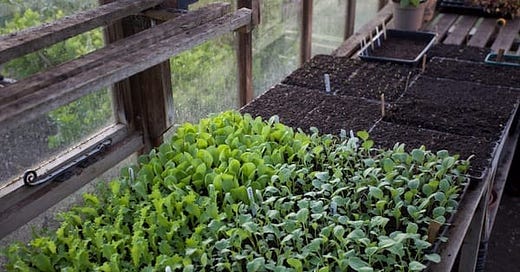



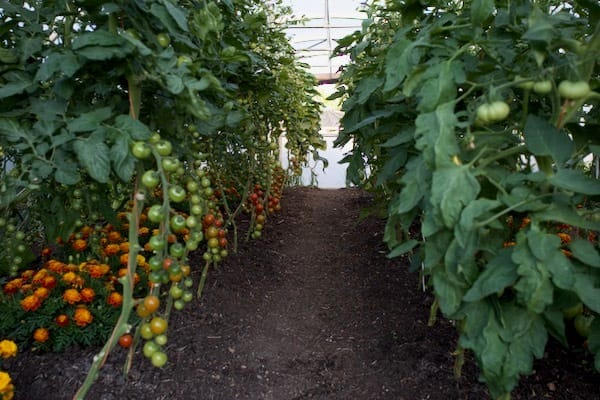
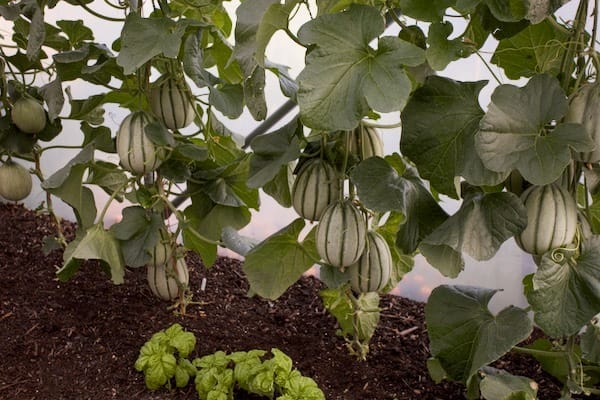
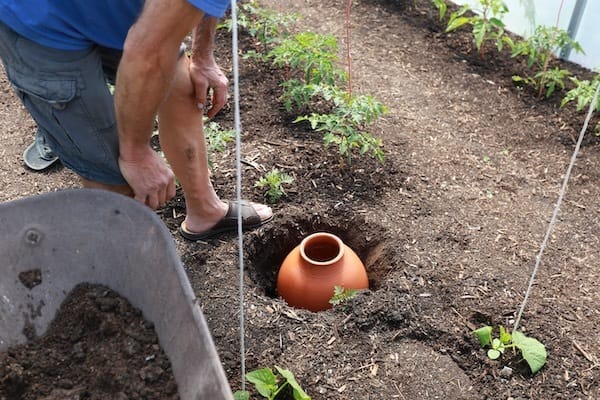
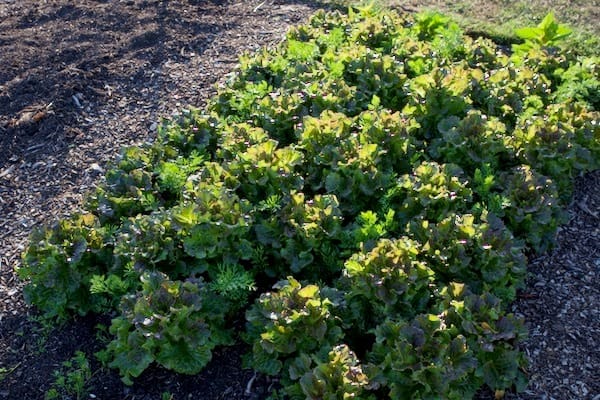



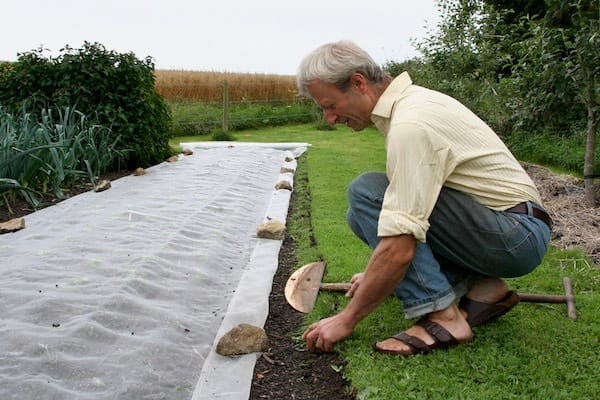
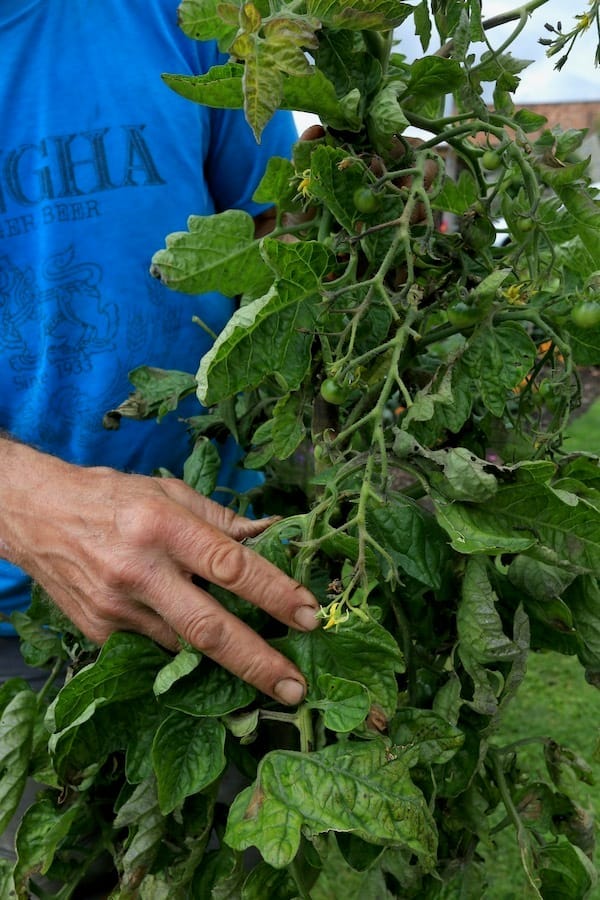
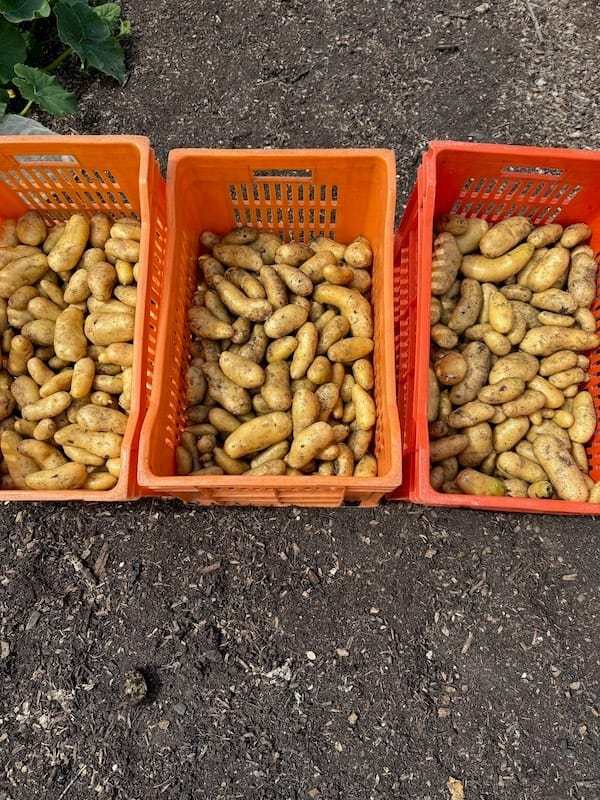
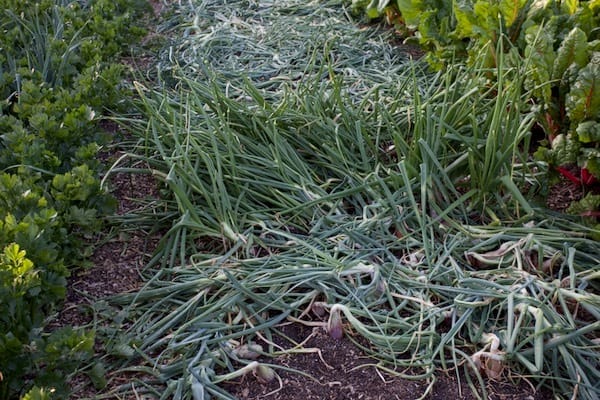
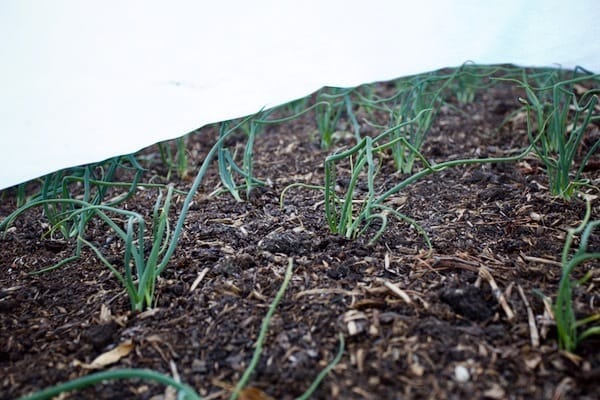
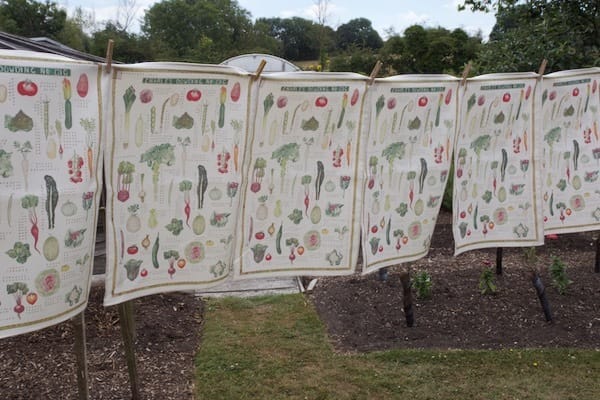

Hi Charles, firstly thanks for all this good info and all the updates, it’s very inspiring.
Is there anything you would change about your no-dig system for the tropics and where it’s very heavy extreme rains? I’ve been using the biointensive double dug bed methods and always heavy mulches but going to start experimenting with your compost mulch now that I’m producing plenty of my own (thanks to our cow).
Cheers! (and hope you get some rain soon… we got 34cm in June!! Most of that in just two downpours)
You are getting summers like we are in the Pacific Northwest of the USA now. We have nearly a Mediterranean climate now with mild winters and hot, dry summers. Growing up it was rain all summer except August and cold winters( Cold for us is 20s/30s/40sF). Probably much like you have been in the UK.
I’ve heard the Honga Tonga volcano eruption from a few years ago was supposed to cause heating up of the planet for a few years and this must be it. I’ll take cool and wet again please! It’s a pain having to water things all summer which is our typical summer.